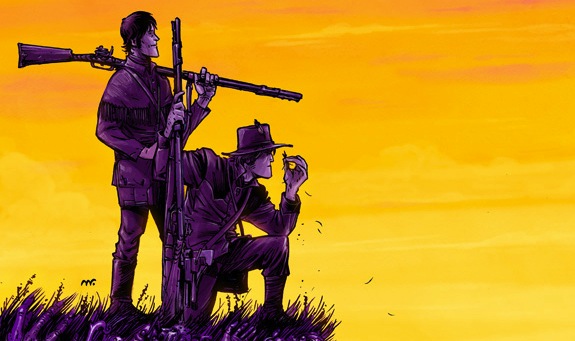 Concurrent with this year’s New York Comic-Con, a “Comics and the Jews” panel was hosted at the Center for Jewish History’s auditorium by the American Jewish Historical Society, Forward magazine reports. The discussion featured Karen Green of Columbia University, Paul Kupperberg formerly of DC Comics, From Krakow to Krypton: Jews and Comic Books‘s Arie Kaplan, Danny Fingeroth formerly of Marvel Comics and author of Dressed as Clark Kent, and former publisher of DC Comics Paul Levitz. The familiar origins of American comics as a urban Jewish product were recounted, as was a compelling intercultural anecdote:
Concurrent with this year’s New York Comic-Con, a “Comics and the Jews” panel was hosted at the Center for Jewish History’s auditorium by the American Jewish Historical Society, Forward magazine reports. The discussion featured Karen Green of Columbia University, Paul Kupperberg formerly of DC Comics, From Krakow to Krypton: Jews and Comic Books‘s Arie Kaplan, Danny Fingeroth formerly of Marvel Comics and author of Dressed as Clark Kent, and former publisher of DC Comics Paul Levitz. The familiar origins of American comics as a urban Jewish product were recounted, as was a compelling intercultural anecdote:
“I got into a discussion some years ago with a group of Arab editorial cartoonists who were probably as liberal a group as you can have in the Arab world,” said Levitz. They were visiting a State Department thingamaboby and one of them asked: ‘Aren’t all these super heroes just about the American belief that might makes right.’ I can see it, but I believe these [cartoonists] believe the American principle that we are born with gifts and talents and it’s what we choose to do with our gifts and talent….” Fingeroth interjected: “…is to use that power wisely and justly.”
Read more about Forward‘s 2013 coverage of Karen Green’s work on cartoonist Al Jaffee and the Columbia library here.


 The latest issue of the Studies in Comics journal from UK-based publisher Intellect features an article by
The latest issue of the Studies in Comics journal from UK-based publisher Intellect features an article by 
